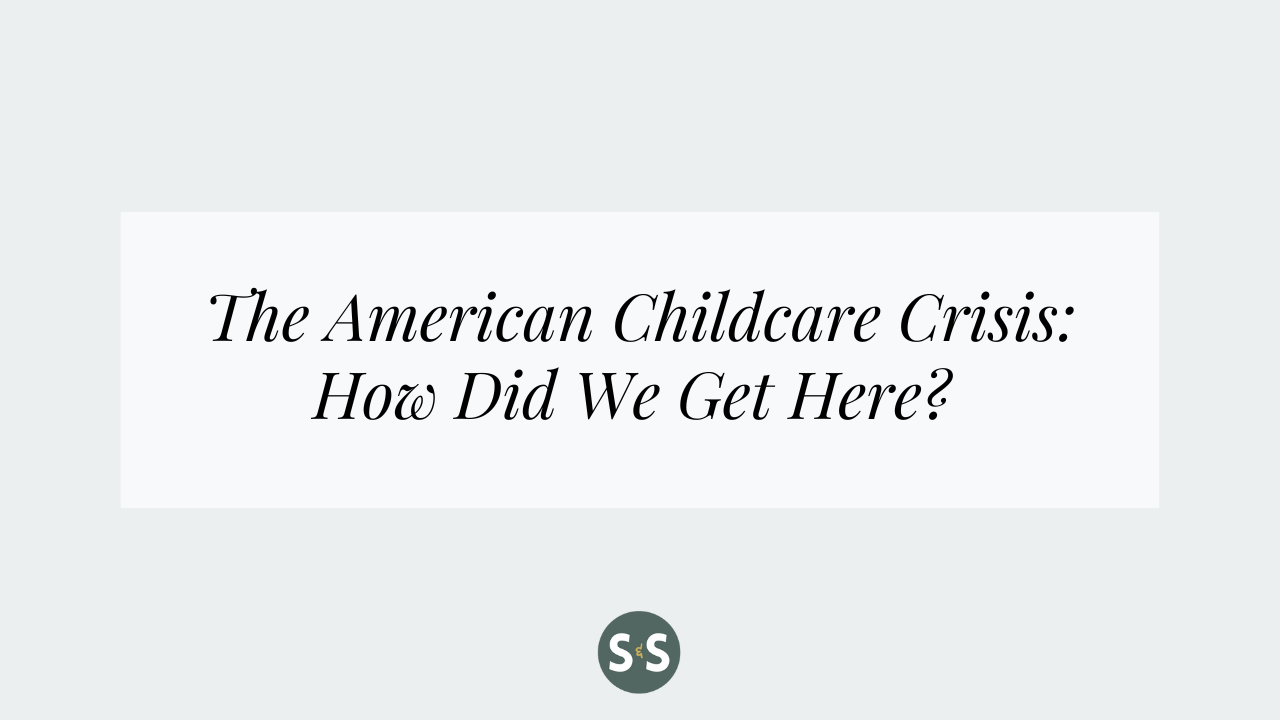The American Childcare Crisis: How Did We Get Here?

The statistics are staggering. On average, preschool teachers are paid half of what kindergarten teachers are paid. The wage gap is more extreme for educators of color, who make up 40% of the ECE workforce. 20% of the early childhood workforce turns over every year.
As one of the wealthiest nations in the world, how did we get to a place where early childhood educators are so undersupported that they’re leaving the field entirely?
Our childcare system began in space where it was primarily stay at home parents. During WWII, more women began to enter the workforce and the childcare landscape began to shift. People came together to help each other, and a lot of family care programs popped up across the country. These programs weren’t licensed or registered–they were the village in action.
Eventually we shifted into more of a head start model, and then child-care centers grew in the 90's. When we learned more about child development and how pre-K can impact children entering Kindergarten, we shifted towards UPK programs.
As the childcare model has shifted we’ve seen growth in the regulations around early childhood education. We now have federal UPK funds, Headstart, and other nonprofit and/or government organizations to support childcare systems. There are also all kinds of nonprofit and government organizations that are trying to professionalize the workforce, collecting data on early childhood and trying to support new or existing programs to improve quality based on the data.
We have all these different moving parts because of the way the system slowly evolved and was piecemealed together. There is no governing body for Early Childhood in most of the states in the U.S. which makes systems change difficult because there are so many organizations that have to come on board. It also makes optimizing finances difficult because there isn't grant funding under one roof. All of these logistical challenges work together to contribute to the broken system we are working within today.
Programs end up in competition with each other over which program is best rather than coming together to evaluate and allow growth and change where needed. Ultimately we’ve ended up with overworked, underpaid, and underappreciated early childhood educators who are burnt out and leaving the field at an unprecedented rate.
Where do we go from here?
We've collected the data showing what teachers need right now to reduce burnout and increase sustainability in the field. You can see the data report here. The experiences of teachers on the ground in the classroom is what drove us to create the S.E.E.D. Certification®.
The S.E.E.D. Certification® is what I needed as a teacher and director. It's the missing piece to SEL that focuses on supporting teachers with tools for our awareness and regulation so we can navigate the everyday challenges of doing this vital work. From workshops to community, we are changing the game for early childhood educators. It’s low-cost, efficient, and created by teachers for teachers.
However, the S.E.E.D. Certification® is a piece of the puzzle, it isn’t everything. Until we can come together with all the puzzle pieces we aren't going to see a lot of progress in early ed. In addition to PD that addresses what teachers actually need, we need a governing body for early education in each state and we need a more streamlined system for dealing with government funds in order to optimize their use.
Want to learn more about how to tackle teacher burnout and make this vital work more sustainable? Tune into this episode of Voices of Your Village podcast!
